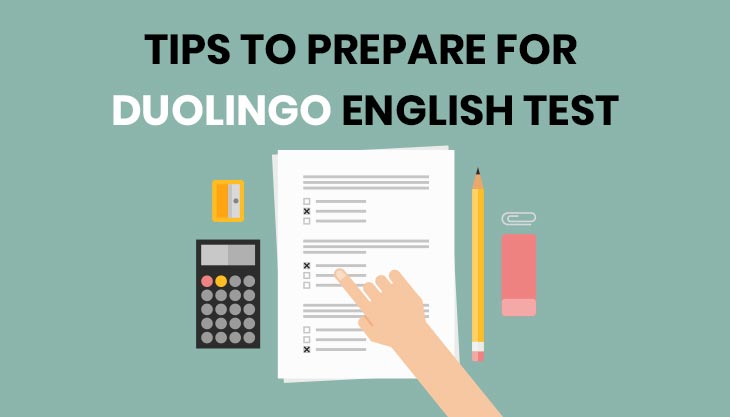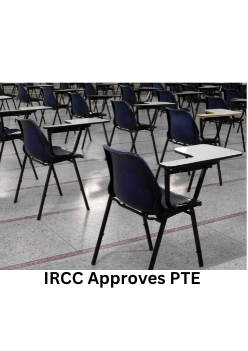If you are here, it probably means that you read our last article on the Duolingo English test – and are sold on taking it yourself!
(If you haven’t read it yet, then you can go do that now – we’ve broken down the test and answered every question you might have!)
Now that you’re planning to do the test, it’s time for you to get started with your preparation.
As you’ve probably learned, the question patterns are rather different from the traditional tests you may have already encountered, like IELTS and PTE. And different questions, mean different preparation strategies.
Interested in understanding how Duolingo works and other requirements for giving the Duolingo English Test, check our blog on What Is The Duolingo English Test?
The Hurray Overseas Education team has put together a list of suggestions, tips and strategies to help you prep – and of course, ace the test in one go! Read on to learn more.
Step One: Prepping Before the Test
-
Practice!
Once you sign up, you will have access to the practice test – and can take it an unlimited number of times. Each time you do the test you’ll have a different set of questions – which means you will be able to get plenty of useful practice in.
Practising using this practice test is highly recommended. It is the best way to help you get used to the structure of the exam, including the nature of the question types, the time limit given for each question, the shifts between different skill categories (e.g. a listening task may be followed by a reading task), and so on.
-
Hone your vocabulary and grammar skills
In any language, vocabulary and grammar skills are the building blocks of effective communication.
Vocabulary involves knowing a large repertoire of words, their meaning and appropriate usage.
Grammar skills involves the correct usage of the various functional elements of language, including punctuation, sentence construction rules, tense formation and so on.
How to develop these skills?
The primary way for you to do so is to READ. We recommend selecting good publications, well-known for their quality and with a wide variety of content – Time, The New Yorker, and National Geographic are a few examples.
How will they help?
While vocabulary and grammar are essential overall, you will find them particularly useful in doing the following tasks:
|
Vocabulary |
Tasks: Select words that belong to the English language (both listening/reading) How it will help: you will be able to identify which words are non-sensical Example: Tasks: Writing – describe image, write a short passage, and Speaking – answer short question How it will help: you will have a repertoire of words that can be used to communicate complex ideas, indicating your ability to use English well |
|
Grammar |
Tasks: Writing – describe image, write a short passage How it will help: in communication through writing, good grammar ensures that you are able to construct your ideas in ways that are complex as well sensible |
-
Accent and Pronunciation
Vocabulary and grammar are 2 essential skills required for comprehension.
However, when it comes to listening skills, you also must be able to comprehend accent and pronunciation.
Accent:
-
In each of the listening tasks, you will hear either British or American accents – while these are largely neutral and very clear to understand, it is best to familiarise yourself with them.
-
For this, we recommend listening to audio-based programmes, including television programmes, radio programmes, recorded lectures and podcasts. Ensure that you select good quality programmes that are American/British in origin – the CNN and BBC are excellent starting points.
Pronunciation:
-
Similarly, you must familiarise yourself with the pronunciation of words. The sources you use for accent, can help you out here as well.
-
As an added activity, you can look out for words that are commonly mispronounced and make a list of the same – in doing so, you are likely to avoid mistakes.
-
Good pronunciation will be of benefit to you in the listening tasks, for purposes of comprehension.
-
And it will also aid you in the speaking tasks – correct pronunciation can help ensure that your message is clear and comprehensible.
-
Comprehending Inference and Implication
These constitute another set of skills essential to your comprehension abilities.
Inference refers to the meaning you as the reader can get from what the speaker is saying – even when it is not said exactly that way.
Implication refers to the meaning that the speaker is giving without saying it at all.
To explain how this works in the test, we will use an example directly from the Duolingo test!
To explain how this works in the test, we will use an example directly from the Duolingo test!
|
Example task: Complete the passage
Thus: “s u c c e _ _ _ _ _” + implication i.e. famous band =inference: successful |
While we have broken this process down for you step-by-step, for you it will happen quickly. The best way to develop this skill is, once again – to READ and PRACTICE.
5. Get Assistance
For the speaking and writing tests, getting feedback is an extremely valuable tool – something that, unfortunately, you will not get from the practice test.
So, here’s what we suggest:
-
Take a note of some of the topics given for both speaking and writing
-
Practice with them outside test conditions – i.e. for the speaking test, you can record yourself on your own device, while for the writing test, you can write in your own word book. However, try to maintain the time and word limit where possible.
-
Submit your work to someone you trust for a review of your work – preferably a teacher or a trainer. Request feedback regarding the quality of your language use as well as areas where you require improvement.
-
Accordingly, go back and improve your answers!
The more feedback you get, the better – it helps you to remember your problem areas and to watch out for them during the test.
Step Two: How to do the Test
-
Do not rush
As you do each task, you will see a tab that is continuously counting down to the time limit. But do not let it intimidate you!
The test is designed to give you as much time as you need to finish the task successfully – you will probably finish sooner than expected.
So take your time with the task – do not focus on the time limit so much, that you sacrifice the correct answers!
-
Take the time to plan
Some of the tasks require you to think a little before you start – the writing tasks, for instance.
In the ‘Describe image’ task, take a few seconds to examine the image, before you begin writing. Similarly, do the same for the ‘Write short passage’ task.
When you have a structure in mind, you will be able to write smoothly without too many erasures or errors.
-
Focus on your talking-points
For the speaking task ‘Speak on a short topic’, you will be given a few prompts/points to cover. During your prep time of 30 seconds, think about your topic, while also skimming through the prompts.
When you start answering, focus on each point, one after the other, and speak on your topic. By focusing on these points, you will be able to maintain a good flow of speech.
-
Pay attention
This is especially essential for the listening tasks – particularly the ‘Type recorded sentence’ task.
You will be given two replay options, which will be useful to you in case you are unable to remember any part of the sentence while performing the task.
However, the first time the recording plays, pay as close attention as you can – this is to ensure that you do not waste the ability to replay in case you really need it.
Additionally, once you’re done with the task, if you still have a replay option left, you can use it to check your answer.
-
Check your work before you submit
This one is essential! If you still have time left on the clock, do not rush to click ‘Submit’ – instead, use the time to skim through your work, keeping a look out for any accidental spelling errors, forgotten punctuation and so on.
Taking the time to check your work can make all the difference to your getting top scores!
All Hurray services, including training and Overseas Education counselling are currently online and available – you may reach out to us at info@hurrayedutech.com or 8971357938 / 9900426501, for assistance.
* Production of this material without written permission from the company will result in legal and criminal action against all perpetrators.











Post Comments